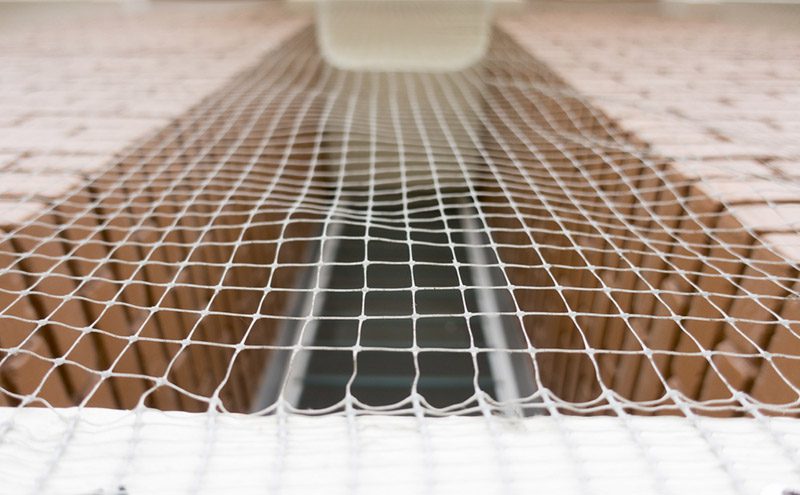
Developers and building asset managers need to think carefully before installing nets to preclude nesting birds, and consider what other options might be available, says EPR
Developers that install netting on trees, hedgerows and buildings before construction starts, or asset managers using netting to protect their buildings – while seeking to act in accordance with environmental law – should carefully consider their approach, including whether it is actually necessary to install netting in the first place, according to ecological planning consultancy EPR.
Netting off vegetation, buildings or other structures creates a barrier that can stop birds arriving and starting to nest, provided it is installed correctly, at the right time, and the right type of netting is used. Where consented development projects require the removal of features that might be used by nesting birds, this can reduce commercial risks and delays related to the fact that nesting birds receive certain legal protection. Additionally, netting can reduce risks to the birds themselves, as it can be used to prevent them nesting in areas that would put them at risk should work begin without their presence being noticed.
Notwithstanding the legitimate motivations, the use of netting is fraught with risk. It should be deployed carefully and as a last resort, after other options have been carefully considered and discounted.
Two recent incidents, at a hotel in Newcastle and a development site in Surrey, have occurred where the installed netting trapped birds – with members of the public capturing images of trapped or dead birds, which were shared on social media.
If installed correctly, netting can be used in accordance with environmental legislation. In the Newcastle case, the netting may well have been installed in the best interests of public health because many nesting birds in one place can increase disease risk.
In the Surrey case, netting may also have been used with the right intentions. Nevertheless, the reputational damage done by installations that acted only in accordance with the law, rather than taking a more nuanced approach, is severe.
Developers and asset managers therefore need to reconsider their approach to preventing harm to wildlife on their sites if they are to be seen as environmental custodians, rather than detractors.
Making recommendations to developers and site managers, Dave Smith, Eastern Regional Director, EPR, commented:
“Whatever the motivation, the choice to use netting can be perceived as an ethical and moral value judgement that might affect the perception of a company or site by the public, local politicians and local authorities.
“The netting used to manage kittiwake nesting in Newcastle is a prime example. Whilst there certainly appeared to be problems with the execution of the netting installation, there would probably have been noise and cleanliness issues associated with these nesting birds.”
“However, the building owners have missed an opportunity to improve their assets for wildlife, where they could have gained kudos for their positive work to ‘green-up’ the city. Retrofitting planting on sills, green roofs, and installing nest boxes for smaller birds instead of netting could have created a more attractive solution and countered the weight of negative public perception. At the same time, there was an opportunity to improve brand and commercial value for the business by appealing to nature-focused customers or visitors.
“Similarly, rather than netting off trees on development sites, project proponents have an opportunity to retain habitats for longer to allow birds to use it. Precluding nesting birds should not improve the prospects of a planning consent, as in theory decisions should be based on the actual value of a habitat for breeding birds, rather than an artificial and temporary reduction in use caused by such measures. We strongly advise against the use of netting where works have not yet been consented.
“If construction work is in train, other options should be explored before resorting to netting. For example, can the work be carried out at a time of year when birds are not nesting? Are there other ways to encourage birds to nest elsewhere by removing potential nest features outside of the nesting period, or the use of deterrents?
“Where netting is the only remaining option, it is important that it is installed under experienced professional supervision at a time when there will not already be nesting birds present. The right type of netting should also be used, that will not entangle birds or other wildlife. It must be carefully installed so that there are no gaps for birds to enter and become trapped underneath, inspected regularly for signs of damage, and left in place for the minimum amount of time necessary.
“Perhaps, more often than not, we can find ways of working around and with wildlife in these instances.”






